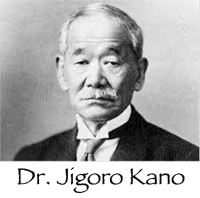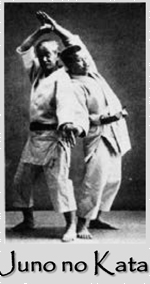History of Judo
 The founder of modern Judo, Jigoro Kano was a visionary and a prominent educator. As a young boy growing up in Japan, Kano was slightly built and physically weak. When Kano found himself the target of bullies, he vowed to strengthen his body and spirit. It was Kano's determination to defend himself that ultimately led to the creation of Judo.
The founder of modern Judo, Jigoro Kano was a visionary and a prominent educator. As a young boy growing up in Japan, Kano was slightly built and physically weak. When Kano found himself the target of bullies, he vowed to strengthen his body and spirit. It was Kano's determination to defend himself that ultimately led to the creation of Judo.
Although a number of different martial arts had been practiced in Japan during its feudal age, Kano concentrated his studies on Jujitsu, and trained under the great Jujitsu masters of the time. Because Kano also believed in the power of education, he continued his study of Jujitsu while attending Tokyo Imperial University, where he earned 2 degrees.
Through long hours of study and practice, Kano analyzed the skills required by Jujitsu and became a master in his own right. However, Kano's true calling was to transform and modernize Jujitsu into a new system. Kano focused on creating new techniques that made the most efficient use of mental and physical energy, and removing harmful or dangerous techniques that had long been part of martial art practice. In addition to learning the actual physical skills, Kano helped his students develop poise, confidence, spiritual strength, and respect for community - qualities necesssary to a productive life. Kano named this new art Judo, which is defined as " the gentle way."
 Kano's focus then turned toward spreading Judo throughout the world. In the early 1900's, Judo gained popularity in the United States after President Teddy Roosevelt developed an interest in the sport. Kano was the first Japanese member of the International Olympic committee and was instrumental in securing Judo's inclusion as an Olympic Sport at the Tokyo Olympics in 1964. It is now the second most popular Olympic sport.
Kano's focus then turned toward spreading Judo throughout the world. In the early 1900's, Judo gained popularity in the United States after President Teddy Roosevelt developed an interest in the sport. Kano was the first Japanese member of the International Olympic committee and was instrumental in securing Judo's inclusion as an Olympic Sport at the Tokyo Olympics in 1964. It is now the second most popular Olympic sport.
